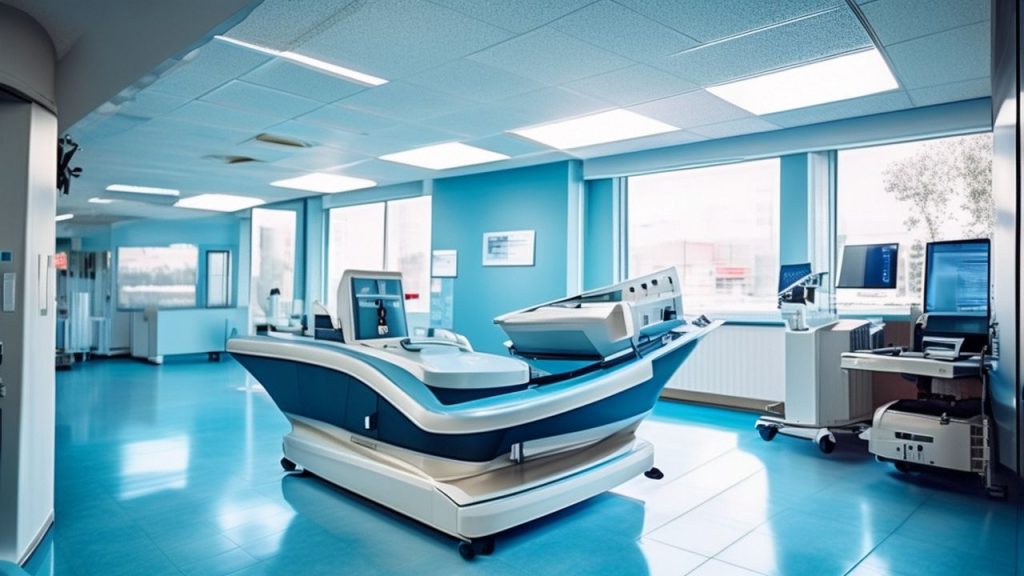Diagnosis of esophageal cancer:
The early symptoms of esophageal cancer are similar to those of common pharyngitis, esophagitis, and benign esophageal tumors, so it is necessary to conduct the following examinations to confirm the diagnosis. Common methods include X-ray barium meal examination, exfoliative cytology, and fiberoptic endoscopy. In case of necessity, chest CT scan and esophageal endoscopic ultrasound examination are applied. In clinical examination and diagnosis, it is advisable to proceed from simple to complex procedures. Fiberoptic endoscopy has advantages over X-ray examination in terms of localization, determination of length, detection of second cancer, and exclusion of benign conditions.

(1) X-ray barium meal examination (Diagnosis of esophageal cancer):
Routine barium swallowing examination often fails to detect early-stage cancer, so it is necessary to carefully and patiently examine the swallowed esophageal mucosa to identify subtle changes on the mucosal surface. This method is commonly used to determine the location and size of esophageal cancer, the X-ray imaging type of the cancer, and the stage of the disease. The X-ray signs of early-stage esophageal cancer include:
- Thickening, tortuosity, or interrupted, irregular margins of the mucosal folds.
- Small filling defects, which may appear flattened or polyp-like, with a minimum diameter of 0.5cm.
- Small ulcer niches, with a diameter of 0.2-0.4cm.
- Localized stiffening of the esophageal wall or retention of barium. The positive detection rate of X-ray barium meal examination for early-stage esophageal cancer is approximately 70%. In cases of intermediate to advanced stages, the signs are more apparent, with frequent findings of narrowed luminal filling defects, loss of peristalsis in the esophageal wall, disrupted mucosa, ulcer niches, and soft tissue shadows around the affected segment of the esophagus.
(2) Esophageal exfoliative cytology examination (Diagnosis of esophageal cancer):
This method is an important approach for detecting early-stage esophageal cancer, as it can identify esophageal cancer that may not be visible on X-rays. It is commonly used for preliminary screening and general surveys of esophageal cancer in high-risk areas, with a positive detection rate ranging from 70% to 90%. However, the positive detection rate of exfoliative cytology examination tends to decrease in advanced-stage cases, mainly because the inflated net cannot pass through the narrowed tumor segment.
(3) Esophageal fiberoptic endoscopy:
This is a routine examination method for detecting in situ and early-stage cancers. It not only allows direct visualization of the specific condition of esophageal tumors and determines their location but also enables the collection of live tissue samples for pathological examination in suspicious cancerous areas. When necessary, esophageal mucosal staining can be performed to aid in the detection of abnormal mucosa and obtain live tissue samples for pathological examination, thereby improving the accuracy of diagnosis. Among the three aforementioned examination methods, X-ray esophagography is less painful and more easily accepted by patients, but it still relies on cytological or pathological examinations to determine whether it is cancer and the pathological type of cancer cells.
The indications for fiberoptic endoscopy examination include:
- Asymptomatic or mildly symptomatic early-stage patients with positive exfoliative cytology results when X-rays do not provide definitive findings.
- Difficulty in distinguishing between benign and malignant findings on X-rays.
- Significant worsening of symptoms in patients with diagnosed benign esophageal conditions such as diverticula or achalasia.
- Follow-up observation of treatment efficacy.
The endoscopic manifestations of early-stage esophageal cancer include:
- Localized erosion, accounting for 53%.
- Local mucosal congestion with unclear borders, accounting for 38.5%.
- Rough small particles, accounting for 27.4%.
- Small masses, accounting for 9.4%.
- Small ulcers, accounting for 6.8%.
- Small plaques, accounting for 6.8%.
The detection rate of fiberoptic endoscopy in early-stage esophageal cancer patients can reach 85% to 90%.
(4) CT, magnetic resonance imaging (MRI), and endoscopic ultrasound examinations are helpful in further understanding the condition of cancer tumors. These methods can be adopted when necessary and conditions permit.
In clinical practice, it is also necessary to differentiate between the following diseases: esophageal tuberculosis, hiatal hernia complicated by reflux esophagitis, esophageal leiomyoma, benign esophageal stricture, esophageal compression changes, and esophageal varices.

